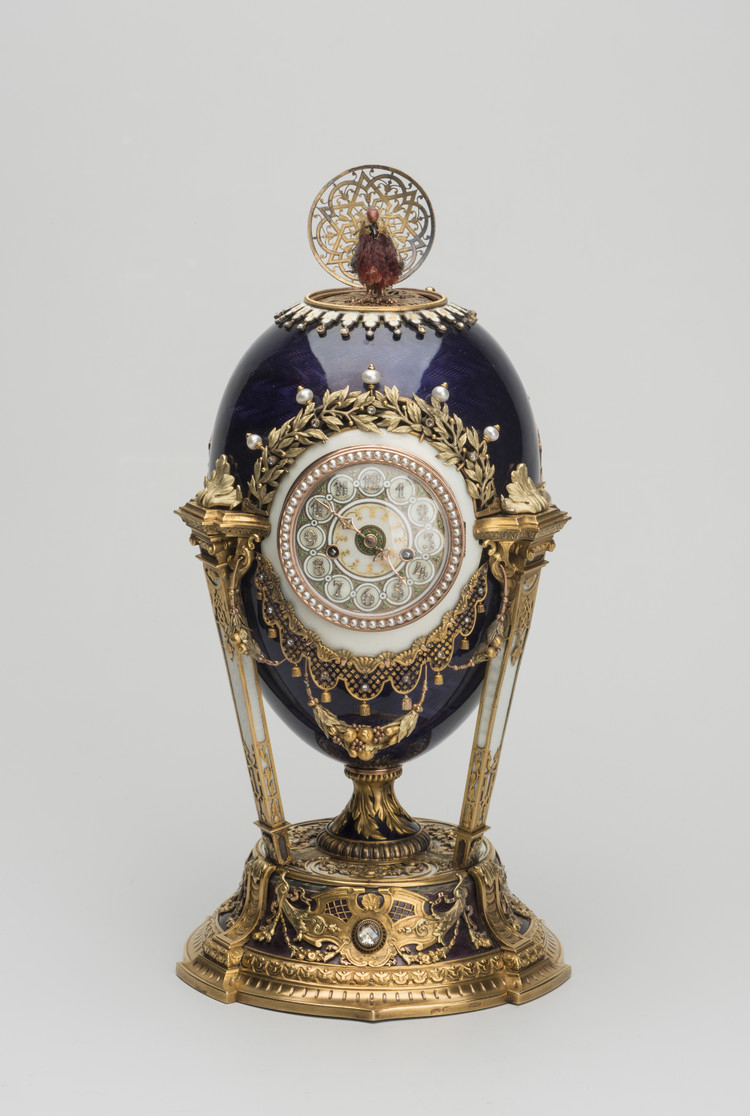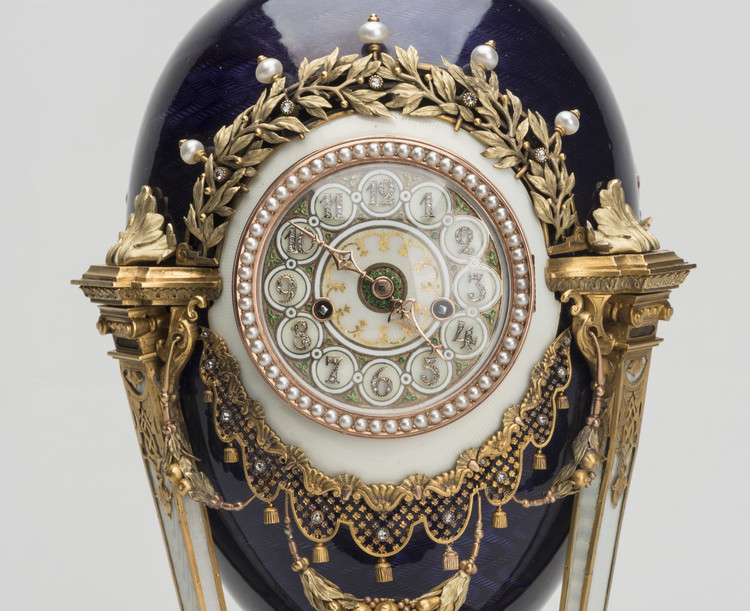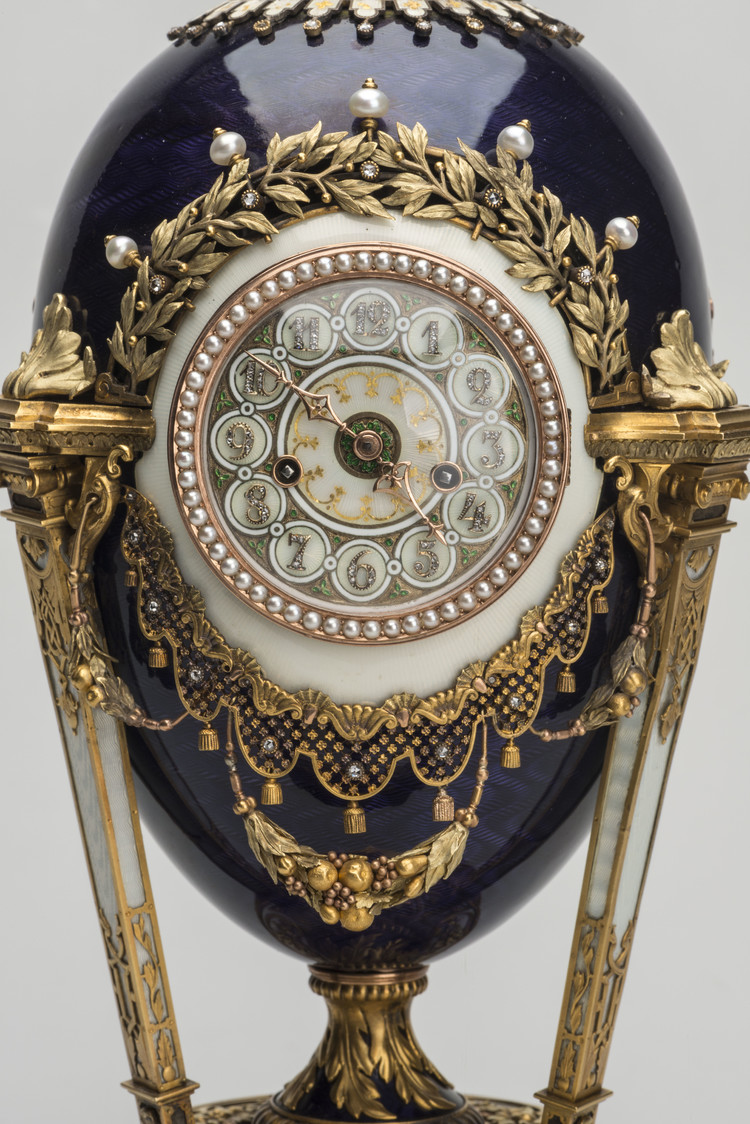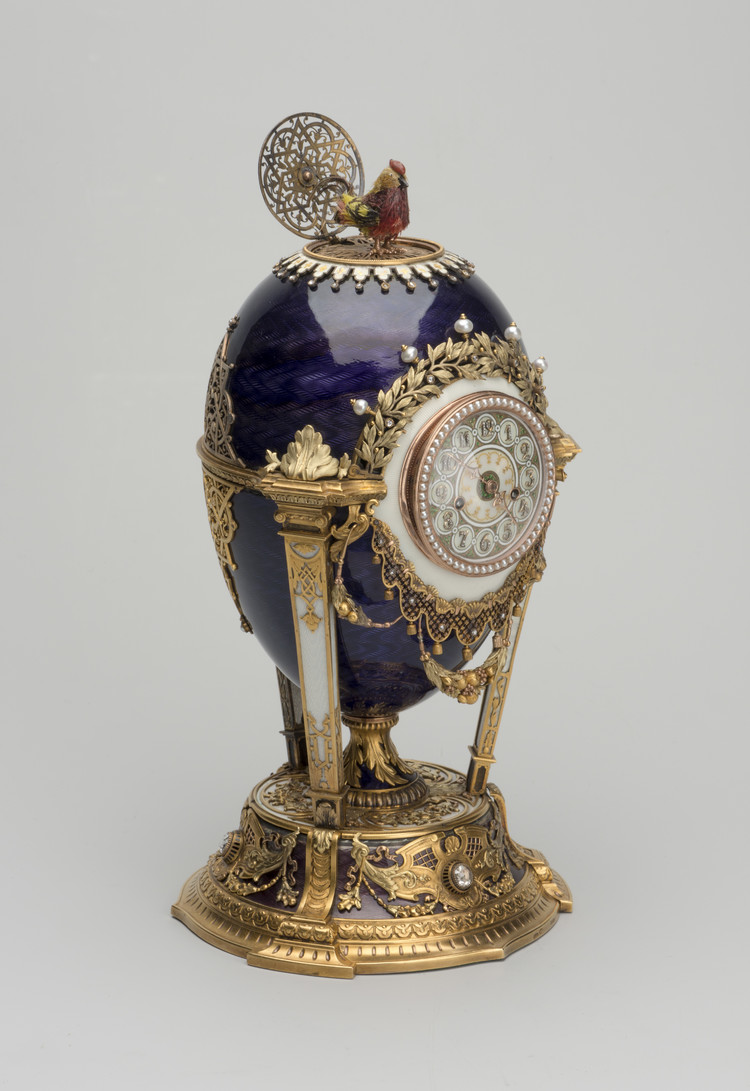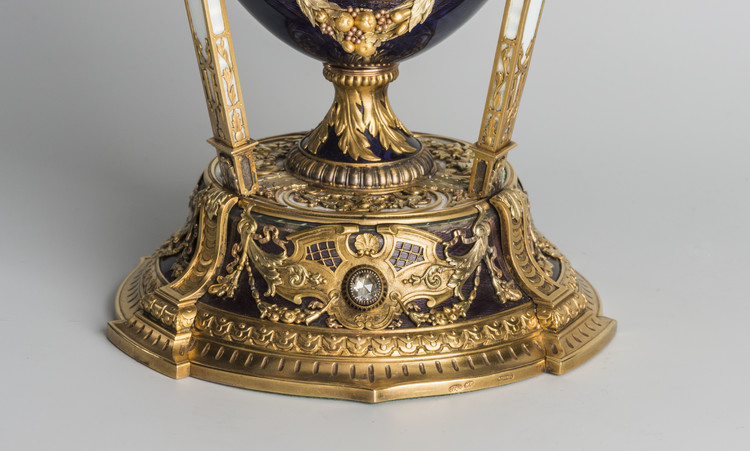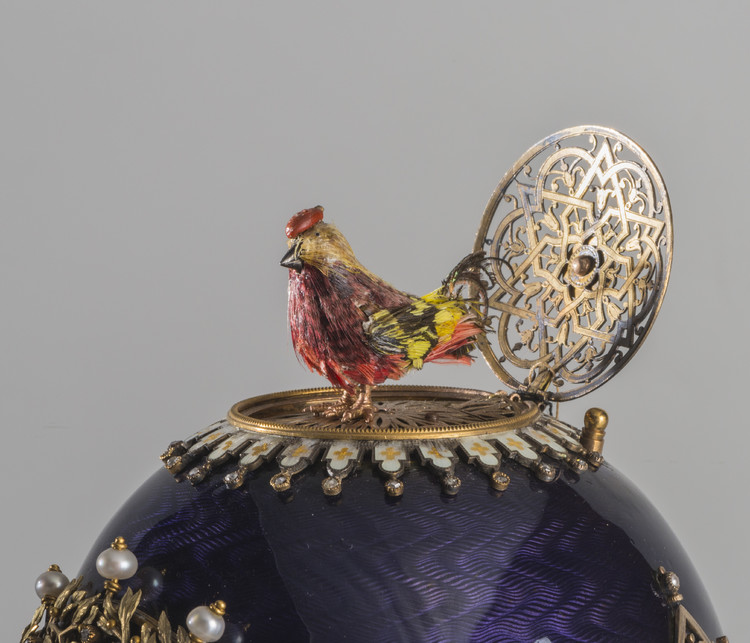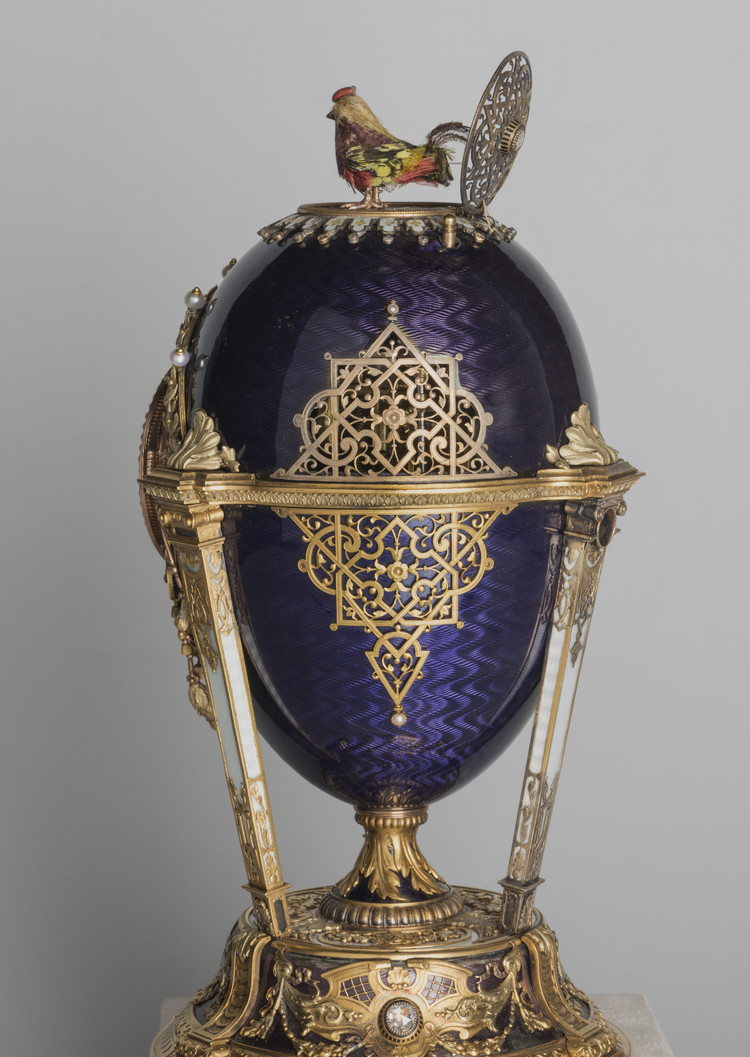For Easter 1900, Nicholas II gave his mother, Dowager Empress Maria Feodorovna, a clockwork egg. It has a round clock face, covered in iridescent white guilloché enamel, with diamond Arabic numerals and filigree gold arrows. It is topped with a laurel garland of green gold with pearls and diamonds, and below it is framed as if by a lambrequin ornament, typical of the late seventeenth and early eighteenth centuries. A rather broad trellis with tassels is complemented by hanging garlands of fruits and berries; the central one used to have a small egg-shaped pearl pendant (now lost). The eggshell is covered with purple guilloché enamel, and the flat four-cornered columns supporting it are covered with oyster-white enamel.
The Cockerel Egg, created at the turn of the century, was made in the style of the turn of the eighteenth century, popular in the circle of St. Petersburg artists of the “circa 1900” era. They cultivated “the French 17th century and its reflection in the Russian 18th century, with which St. Petersburg was imbued, with its marvelous country palaces with parks, fountains, pavilions and statues.”
The French Regency style, praised by Jean-Baptiste Le Blond, with its free play of imagination and gracefulness, was highly fashionable. The egg’s gold ornamentation represents broken pediments with incorporated/embedded/included shells, volutes, deeply carved acanthus leaves, and garlands of fruits and berries. The reverse side of the egg and the filigree cap are decorated with a whimsical twining arabesque.
The surprise is a singing cockerel with natural feathers that comes out of the gold top, opens its beak, and flaps its wings. A cockerel follows the sun, measuring time, and “sings the dawn” of the coming twentieth century, which many believed would be the age of prosperity for Russia. Maria Feodorovna, like other members of the Imperial family, regarded the new century with hope, one that would leave behind the past with its irreplaceable losses.
The Cockerel Egg bears the mark of the firm’s leading jeweler Michael Perchin, a peasant by origin who achieved his dominant position through his talent and hard work. Up to 1903, his workshop created almost all the Imperial eggs and other complex objects of fantasy commissioned by the royals and the St. Petersburg dignitaries. The surviving Easter masterpieces by Michael Perchin form a unique jewelry kaleidoscope, in which various retrospective styles appear: rococo, Renaissance, Regency, and Empire. The master’s work combined nineteenth-century traditions with the Art Nouveau approach, whose influence “was felt even in the purity and sophistication of forms that moved toward ‘neoclassicism.’"
